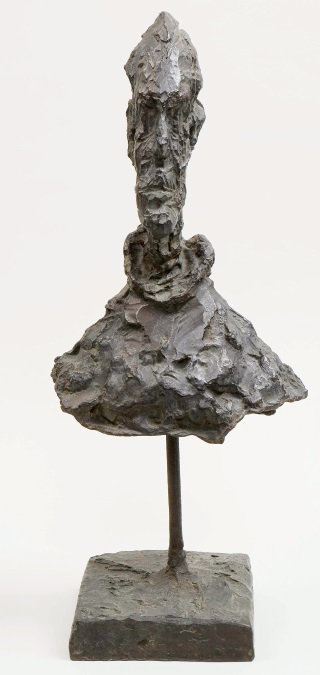The softer side of Brutalism
Antique dealer and writer Edd Thomas of the Antiques Young Guns urges us to discover the softer side of brutalism
After years of bad publicity, mid-century brutalist furnishings have been enjoying somewhat of a revival. It’s fair to say these items have always elicited a love/hate response in people and, for anyone who has seen such items, it’s easy to see why. Incorporating concrete, wood or forged metal, they are often raw, brash and cold. Yet while the smaller furnishings are often lumped alongside their very unpopular architectural relatives, it’s important to recognise key differences that I think mean such artworks should not be written off with the same well tarnished brush.
Brief overview
In architectural terms the Brutalist Movement emerged in the early 1950s as an academic reaction to the increasing blandness of post-war modernism, and Le Corbusier and Mies van der Rohe were quickly cast as the spiritual heads. Formed from the French word for ‘raw concrete’ brutalism represented a new voice tired of the self-engrossed confidence of industrially uniform design. It offered a new bold design language and the promise of social improvement through considered design. As a highly malleable material, the brutalist buildings that emerged were unashamedly concrete, modernist and brash. They found quick favour with institutions and planners in Britain and worldwide keen to build a new landscape, but by the mid 1970s as the promises failed to materialise, the style began to decline.
Brutalist designers

Brutalist furniture and furnishings emerged around the same time in the early 1950s and also embraced many of the same principles as architecture.
However, being of a far smaller scale, these objects did not pretend to be a solution to any of the social debates that ultimately toppled the architectural dream. Instead the brutalist designers and artists seemed to draw more inspiration from the craft movement as well as abstract and surreal expressionism. Inspired by the works of artist such as Willem de Kooning or Alberto Giacometti, the new brutalist furnishings tried to express a sense of urgency and energy by using overtly handmade industrial methods, often incorporating geometric or random forms.
Works by early protagonists such as Marcello Fantoni or Paul Evans tend to have an immense sense of raw power to them as though ripped from the depths of the earth or forged in passionate haste from the anvil. They wear their wounds of frantic torch cuts and solder blobs proudly. By the later 1960s the early zeal had somewhat burned away and while pieces still bore the brutalist hallmarks, the style had certainly evolved. Under artists such as Curtis Jere or companies like the Italian lighting company Poliarte the look became far more refined, thoughtful and in turn serene.
The more mainstream pieces became tamer and sometimes more kitsch to appeal to a more commercial environment. It is this reason why many people get confused by the term ‘brutalist art’ when they first Google it. In the end it was the ability of the object to suggest a sense of energy (whether brutal or calm) and elicit a response in people that really tied them under the same universal label.
Brutalism today
As we progress further and further into another age of elegance, smaller brutalist offerings, full of sculptural energy, start to work well in our homes. In little doses such as on a simple sideboard against a white wall they offer a burst of unashamed vitality that usually complements the general quietness of our rooms. While pieces by the leading artists and sculptors were often signed and can set you back a four or five figure sum, the vast majority of brutalist items were not. Therefore many great items can still be picked up for mere pounds, and when considering any piece (irrespective of price) it should be all about how it makes you feel. As sculptures these things were always intended to elicit an emotional response.
Therefore, no matter how awkward the dinner party may become, brutalist art can always be relied upon to get the conversation started again.

